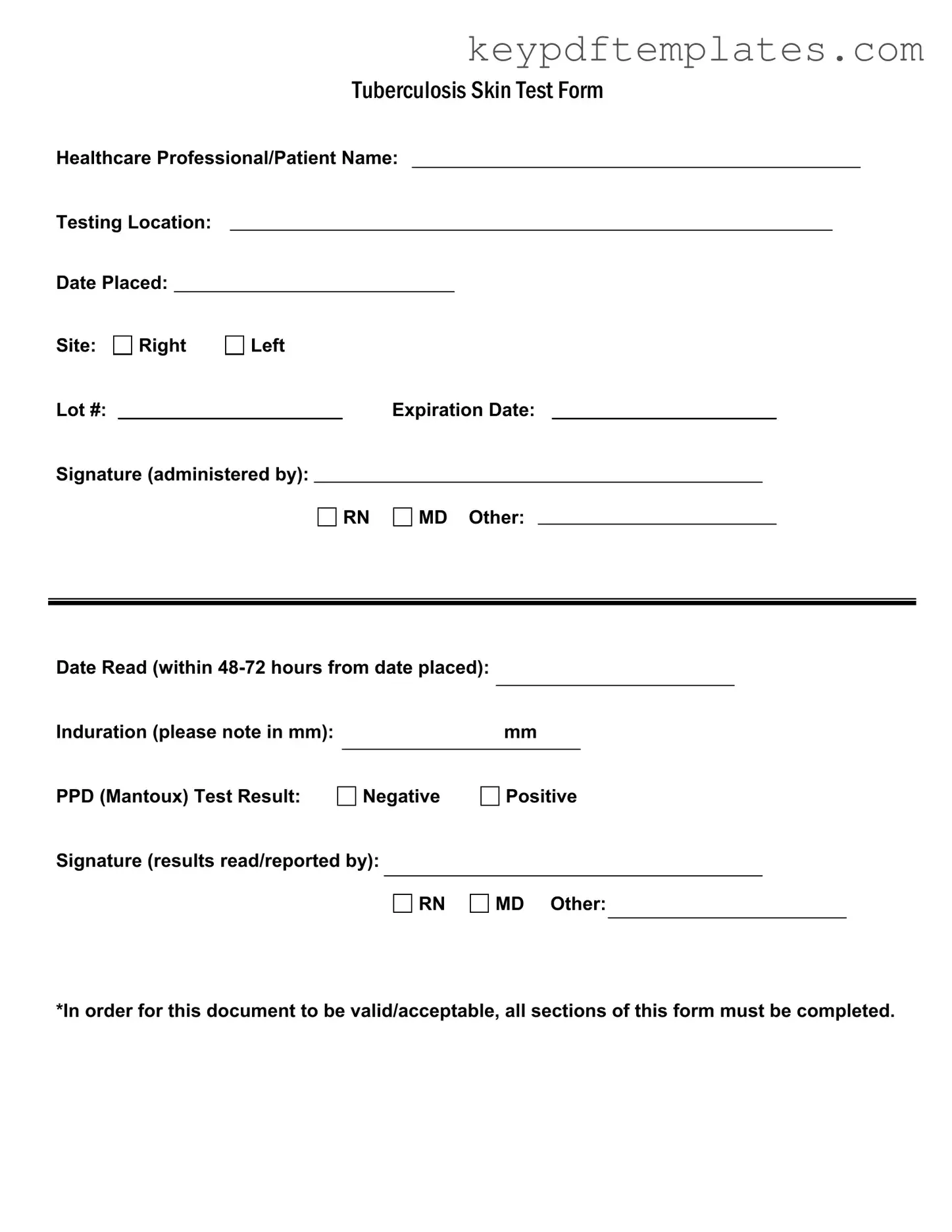Get Tb Test Form
The Tuberculosis Skin Test Form is a crucial document used to record the administration and results of the Mantoux test. It captures essential information, including the healthcare professional's name, testing location, and test results. Proper completion of this form ensures that all necessary details are documented for accurate patient records.
Modify Document Online
